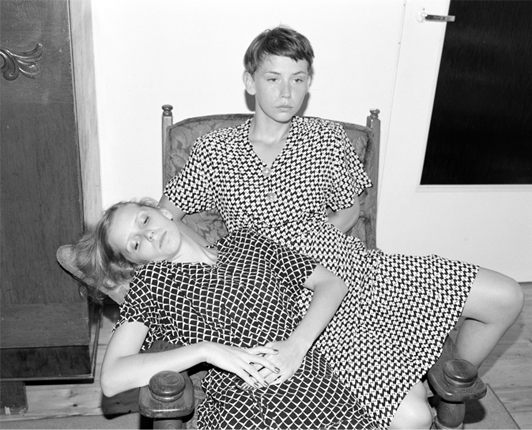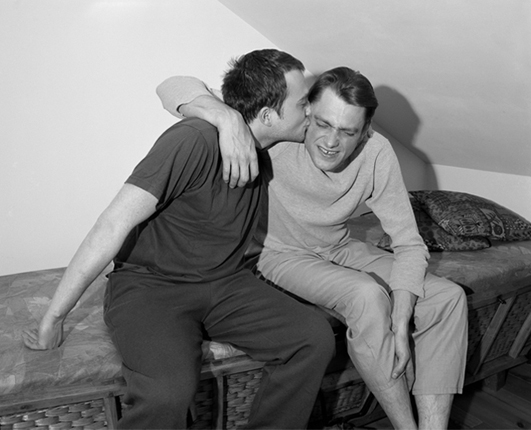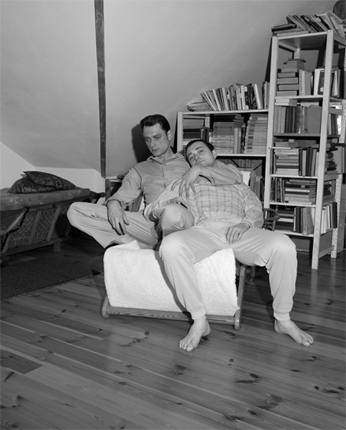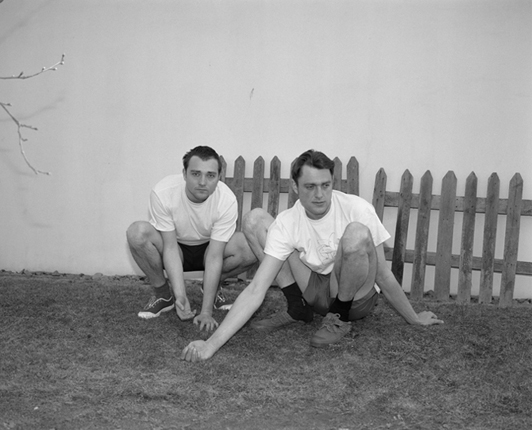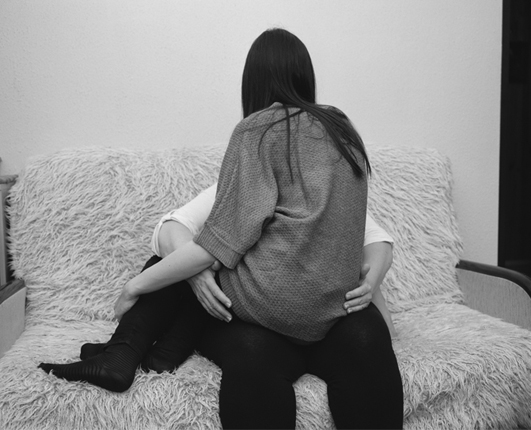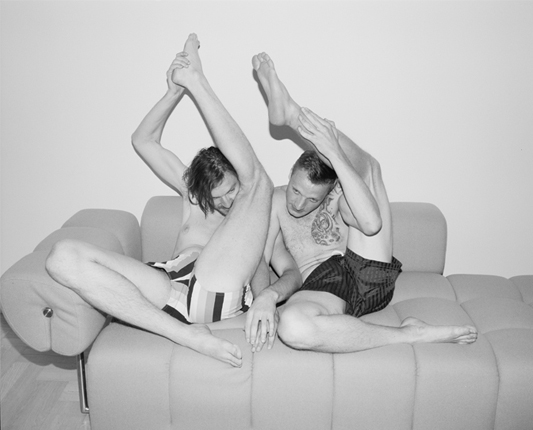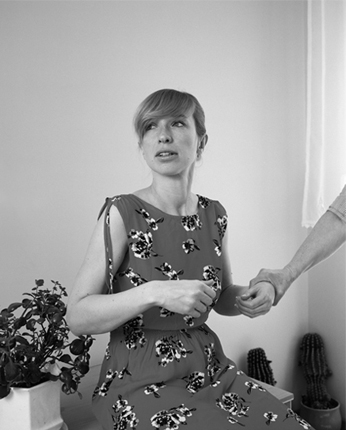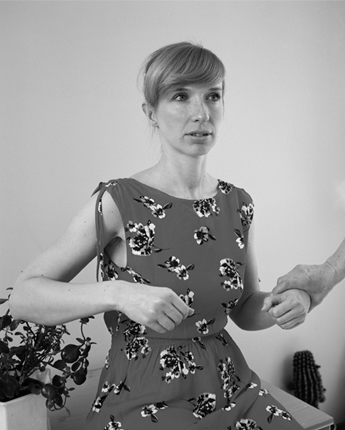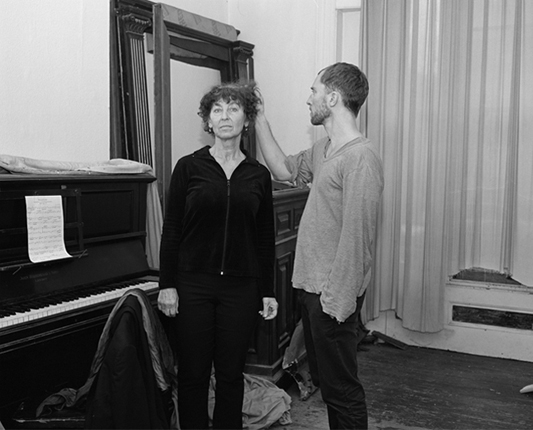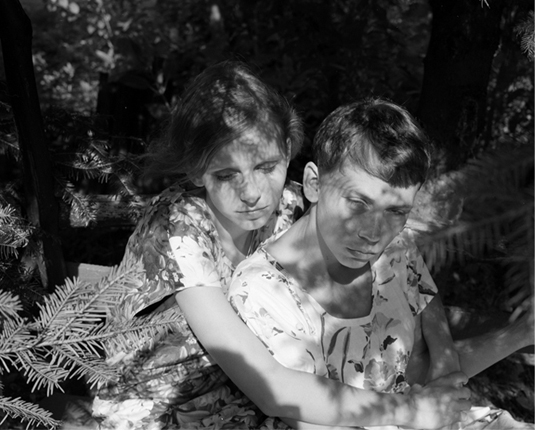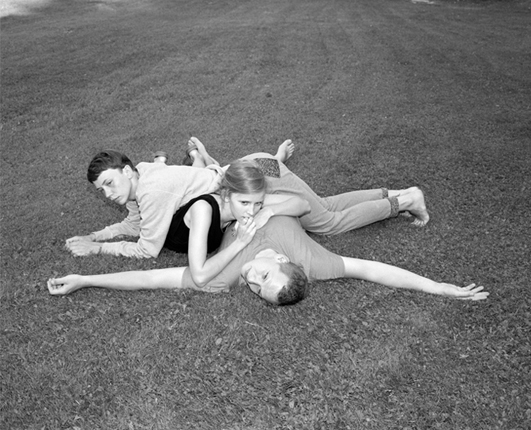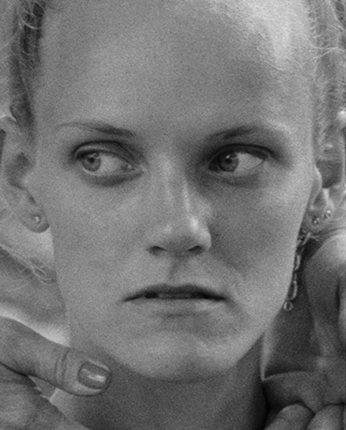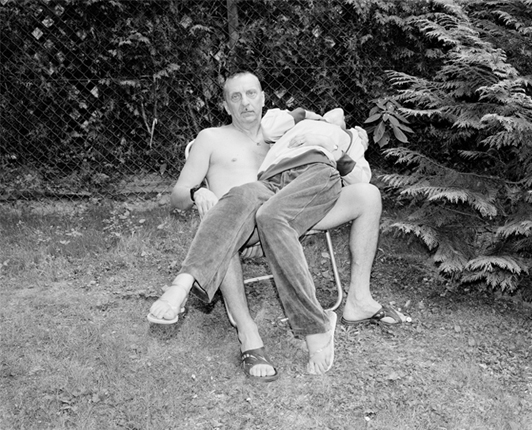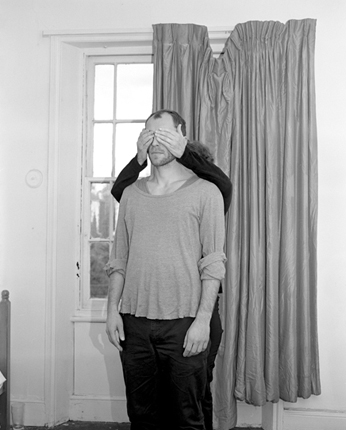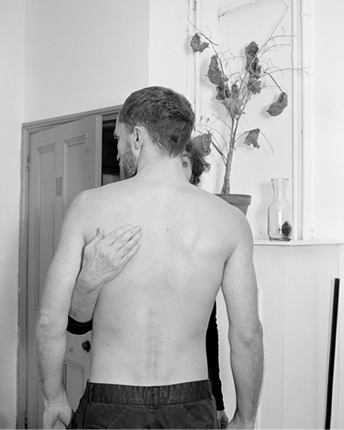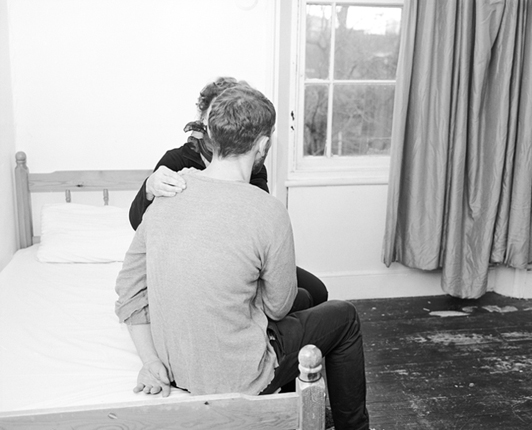IN PARADISE
Why are certain situations, or atmospheres, called steamy? In Joanna Piotrowska’s series of images there is visible sweat on someone’s skin only once. A middle-aged woman, perhaps a mother, turns away from the beholder and looks at a young man stretched out on a bed. Her glistening neck betrays a perspiring body. The clothing she wears, a striped short-sleeved dress, suggests that the picture was taken in summer. In another image, she holds the same young man, perhaps her son, in a pose reminiscent of a “Pietà”, though she does not exactly hold him in her arms. She exposes him or keeps his body erect so that he can be seen or see something himself. The girls, who are also wearing summer dresses and who are perhaps sisters or cousins, may have spent time in the sun but there is no immediate trace of heat on their skin, no sign of humidity, not even when they appear outdoors and seek shelter in the shadow provided by fir trees. One girl’s eyes are half closed, as if her lids were trying to protect the pupils from the blinding light. Maybe she is tired. But steaminess must not refer to an immediately visible physical symptom, to perspiration or hard breathing. It can also refer to the expression of a face, to the way in which a body seeks the close proximity of another body, to a look or a gesture that creates a situation of arousal, a hothouse atmosphere in which the clothes are stripped off in the imagination, projected and actual nakedness become indistinguishable, and the lens is like frosted glass. In Joanna Piotrawska’s series of images, there is always a close proximity between at least two bodies. Most of the time she chooses to photograph couples. Yet when the gaze is not averted or the face hidden, the eyes do not express desire, just as the bodies, for all their proximity in space, do not seem to be carried by an irrepressible mutual attraction.
The photographer has asked her subjects to pose in carefully arranged, almost sculptural attitudes, and the expressions on their faces often signal a detachment, an emptying, a certain exhaustion. The men and the women never look at each other, and when they do, we do not see their eyes clearly, or their eyes give us the impression of being closed. The pictured relationships between two boys, two girls, two boys and a girl, a boy and an older woman, an older man and a girl, do not intimate the steaminess of incestuous or same-sex lustfulness, of the ardour that a young man may feel for a woman twice or three times his age, of the passion that an older man may experience in the presence of an underage girl, a nymphet. The family resemblance between some of the faces, the fact that two boys lie next to each other on a rug wearing only white underpants, is not enough to make the bodies exude real or imaginary effluences. Even the kiss that a boy gives another boy who is sitting next to him on a small bed is chaste.
The smack provokes an expression of surprise or even simulated pain. Although many clues in these photographs point towards steaminess, there is nothing that needs to be let off. We see images without an aura. They transport the bodies into a space where they can linger together, be separate without insisting on their separation, without trying to overcome it, as if togetherness no longer excluded separation. Photography discovers the other side of depression, the offering that all withdrawal comports, an awkwardness no longer opposed to nature. “I don’t want anything from you and that’s why I can be with you, I can set you upright, I can cover your eyes with my hands, I can embrace you, I can lean against you, I can kneel down with you, I can lift and twist my leg around my head as you do, I can sit and rest on your lap, I can strangle you, I can die on you.” The relationship has become an image. It has entered the paradise of photography. Steaminess dwells in colour while paradise proves soothingly grey and washed out.
Alexander García Düttmann from Joanna Piotrowska personal website

